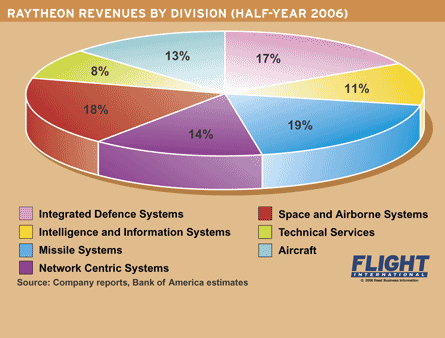By Helen Massy-Beresford in London & Graham Warwick in Washington DC
It is profitable, innovative and its aircraft are selling well in a resurgent market. But does anyone want Raytheon Aircraft?
The Wichita-based business seemed an ill fit with Raytheon long before the defence giant confirmed last month it was looking for a buyer. It is a bolt-together of three product lines. Raytheon acquired general aviation brand Beechcraft in 1980, later taking over jet programmes from Mitsubishi and BAe. There is no crossover with the rest of Raytheon.
"Raytheon Aircraft has unofficially been up for sale for a couple of years - Raytheon has made no secret of its non-core status," says Bank of America's Robert Stallard. But selling it as a going concern - the Flight Options fractional ownership and Beech 1900 commuter aircraft support businesses are being kept - will be a challenge.
The last thing the industry's big hitters - Bombardier, Cessna and Gulfstream - need is a range that vies with their own: Raytheon's line-up extends from the single-piston Bonanza to the super mid-size Hawker 4000 business jet, and includes the T-6A military trainer. Cessna is emphatic: "We are not interested in buying Raytheon Aircraft," says its closest competitor and Wichita neighbour. "We don't see any product fit with our family of aircraft."
Dassault is the only manufacturer with no overlap. Acquiring the Hawker 4000 would save the French firm developing its own super mid-size aircraft. But Dassault would not want Beechcraft, and most believe the Hawker image - big cabins at affordable prices and solid but unspectacular performance - would be wrong for Dassault, whose brand is performance at a price. There are other obstacles. "Dassault has a unique corporate culture," says Teal Group's Richard Aboulafia. "They are not really interested in acquiring other people's aircraft or design teams." And Raytheon Aircraft's military business would be a further problem for any overseas buyer. "Dassault would have politics in the mix," he says.

A more likely scenario is a sale to private investors, with Beechcraft and Hawker possibly offered separately. Investment house Carlyle has been increasing its aerospace portfolio, but there could also be Middle East interest. Aerospace is a glamorous sector for Arabs keen to invest oil revenues in the West, and a global aviation brand - with possible technology spin-offs for the region and long-term growth prospects - is an enticing prospect. Earlier this year, Abu Dhabi's government acquired a stake in Italy's Piaggio Aero. Gulf-owned investment houses have bought into the USA's Cirrus Design and Liberty Aerospace and Britten-Norman in the UK. The only drawback again might be the defence business the Dubai Ports World imbroglio earlier this year proved how twitchy US politicians can be about Arabs controlling "strategic" assets.
Raytheon Aircraft accounts for 13% of Raytheon's business and revenues could hit a record $3.2 billion this year. Bank of America reckons the business could fetch $1.9 billion, although it says transactions of this sort have been rare in business aircraft manufacturing the last was Gulfstream parent General Dynamics' purchase of Israel's Galaxy Aerospace in 2001. The business, says Bank of America's Stallard, "lags its competitors on profitability". It was hit badly after 9/11 and did not return to profit until 1994. Margins are 5.5% - well below the 13% and 15% achieved by Cessna and Gulfstream, says Stallard.
Raytheon has been adventurous in developing composite aircraft, but has suffered as a result. Although now selling well, the Premier I took a long time to get right. The Hawker 4000, formerly the Horizon, was unveiled a decade ago and still has not gone into service. However, the Beechcraft propeller aircraft have been revamped and are selling well. The Hawker 400XP has been a big seller with the fractionals, while the Hawker 800XP, now 850, remains the best-selling mid-size jet.
The focus for the division has been on upgrading existing products, with two derivatives due to be launched later this year. As a result, research and development spend is flat, and this has probably prompted Raytheon to formally offer the company for sale now. With the Premier I and Hawker 4000 paid for, any buyer would have two new platforms from which to develop low-cost derivatives for relatively little cost. A big problem for a new owner would be how long the 1950s vintage Bonanza, Baron and King Air can retain their niche. So far, the general aviation innovators have focused below these aircraft. But the Eclipse 500 very light jet is pitched directly at traditional Baron or King Air customers, while the Diamond Jet and Cirrus Design's new personal jet will put pressure on the Bonanza.
Source: Flight International
















